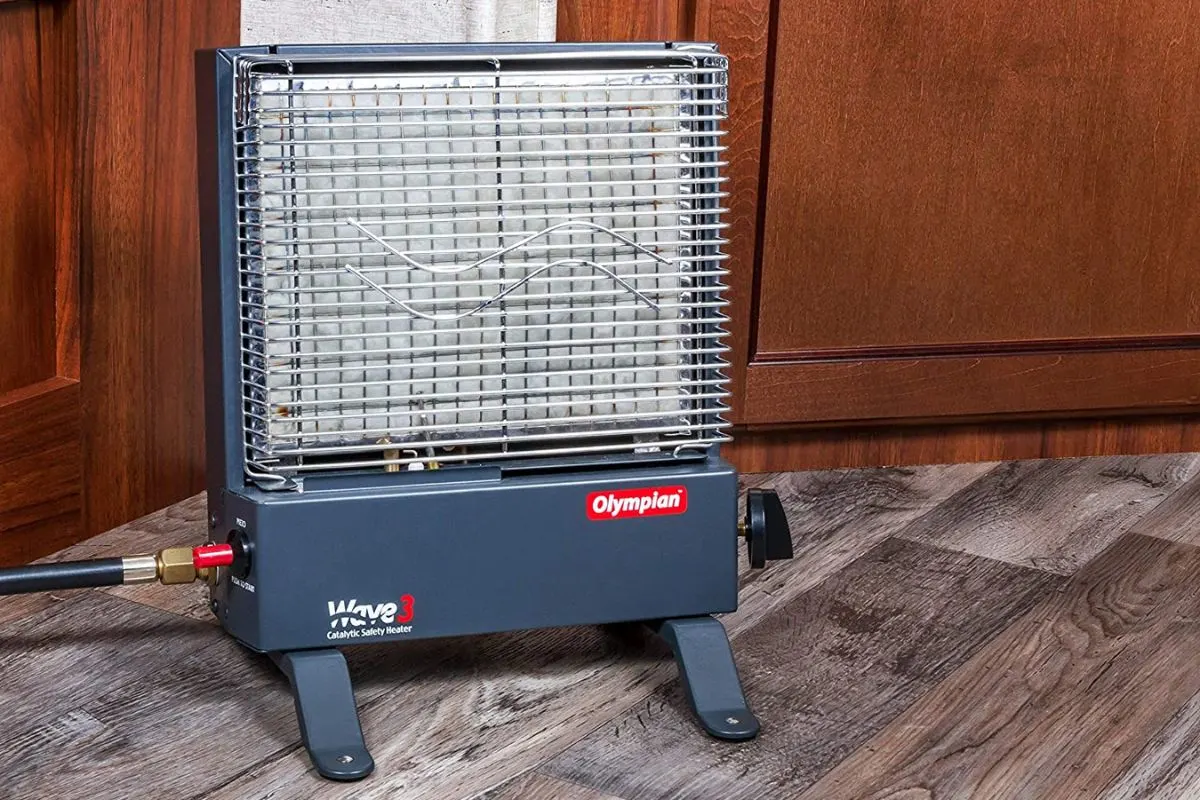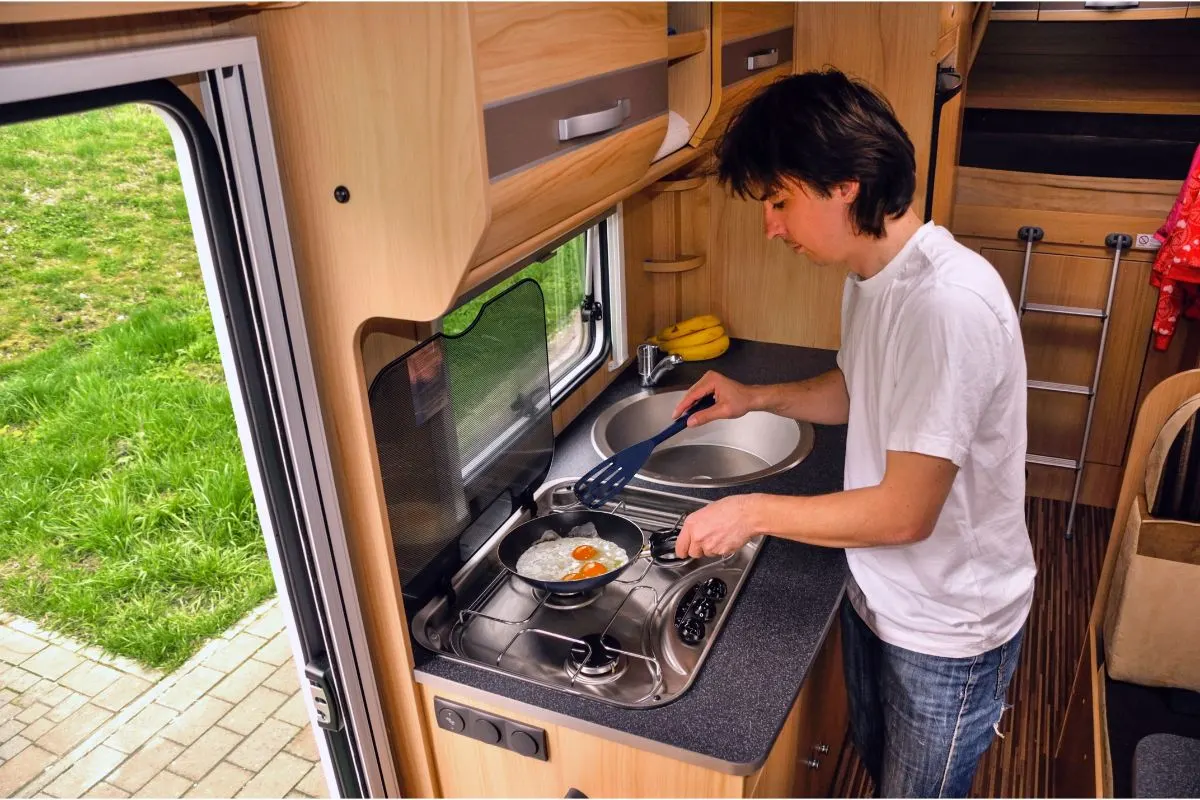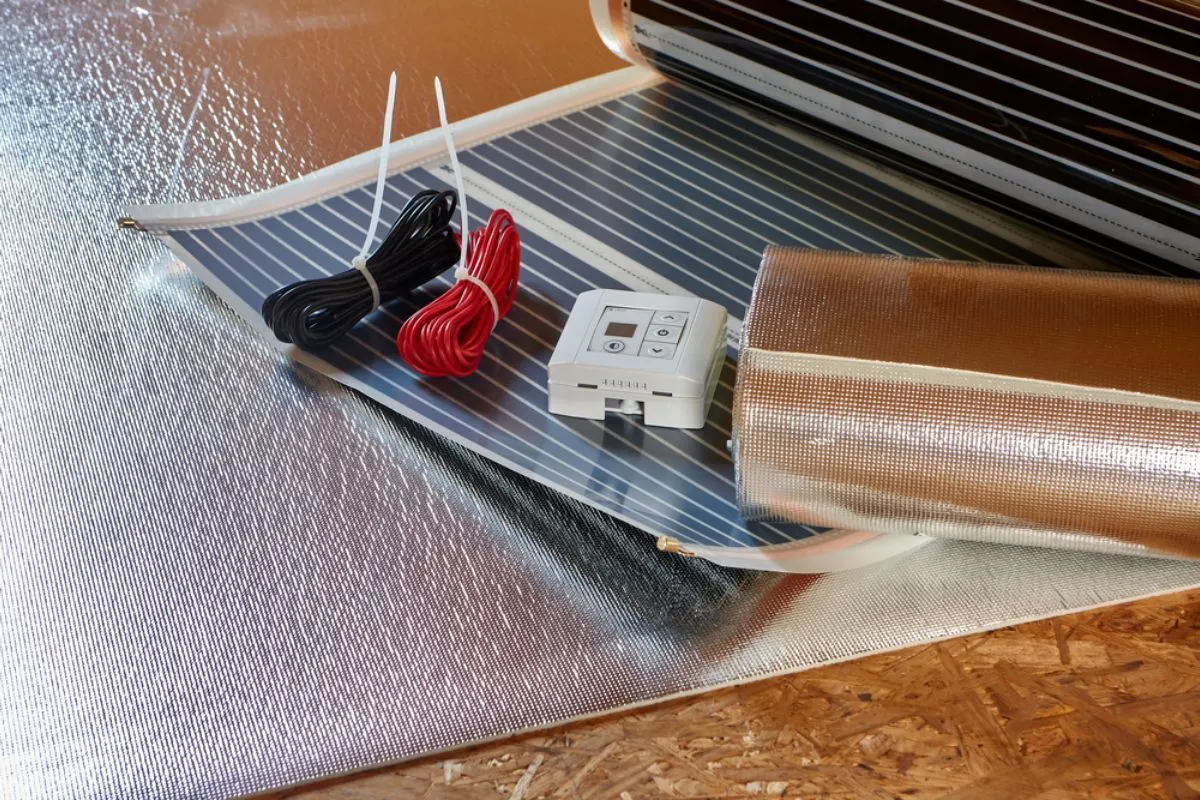
Spring or fall RV camping brings cool days and chilly nights in temperate areas. Even warm-weather winter destinations can get downright cold at night in the mid-winter months.
Heating your RV can make cool weather trips more comfortable when temperatures drop. If adding an extra blanket to your bed coverings at night doesn’t do the trick, adding heat can help keep your RV’s indoor climate comfortable.
Most modern RVs come with built-in heating systems. RV heaters commonly run on propane, but some operate on electricity. Owners of RVs that don’t come with a built-in heater can have one added or add supplemental heat with a space heater.
This article will discuss the various RV heaters available and how they work to keep your RV comfortable in cooler climates.
Types of RV Heaters
Standard RV heaters include:
- Propane heaters.
- Direct spark ignition systems.
- Forced air heaters.
- Hydronic water heaters.
- Under-floor radiant heat.
RV Propane Heaters

Most RVs with built-in heaters have forced air heaters that run on propane.
In older model RVs, the propane heater has a pilot light that must be lit to ignite the propane heating system. Access to this pilot light can be inside the RV, often behind a vent near the floor, or you may access it through an outside port on an exterior RV wall.
Propane feeds a flame inside the furnace when the heater turns on, creating hot air. A fan blows the hot air through vents into the RV’s living space. A propane-fed flame creates hot air and forces it out of the vents in your rig by a blower fan.
Once the pilot flame lights, setting the heater’s thermostat to the desired temperature turns the heater on and off automatically when the temperature inside the RV drops to that temperature. The pilot light will remain lit when the heater is off, but the larger heating flame will cease.
The hot air moves through ductwork beneath the floor as it is pushed to the vents, keeping water pipes and tanks from freezing in frigid weather.
In addition to the thermostat, fan, flame, and ductwork, the RV’s propane heating system is powered by a circuit board, sail switch, and safety limit switch and runs through intake and exhaust vents.
This simple propane heating system is easy to operate and relatively cheap to maintain or repair.
Related: Does An RV Propane Fridge Need Electricity?
Direct Spark Ignition Systems

The Direct Spark Ignition (DSI) system features an electronic circuit board that controls propane valves and ignites the main burner flame using an electric spark. The DSI system conserves a small amount of propane since there is no pilot light.
When the DSI system first turns on, a 12-volt thermostat signals the blower, which runs for 30 seconds or more to bring in the fresh air and purge the combustion chamber from leftover gases. Once the chamber is purified, the automatic system opens the propane valve and ignites it with an electric spark.
If the flame doesn’t ignite, a safety feature signals electrodes in the furnace to shut down the propane supply at the main valve.
Newer furnace models have high-temperature thermal cutouts that shut down the heater if the combustion chamber gets too hot or cannot flow properly through the ductwork.
RV owners should sufficiently charge the battery to operate a DSI heating system. If the battery is too low, the blower fan will not have sufficient power to spark the flame or push hot air through ductwork, and the furnace will blow cold air. The RV can be plugged into an electrical source to ensure the battery retains enough charge to power the heating system.
Things to Know About RV Propane Heaters
While RV propane heaters are simple to operate and relatively safe, there are some things to know before using your RV’s propane heating system.
- Carbon Monoxide Safety – A propane leak can allow deadly amounts of carbon monoxide into your RV. Install a carbon monoxide detector and a propane detector and perform regular checks to ensure proper operation.
- Furnace Cycling – The RV furnace takes 15-30 seconds to ignite the pilot light and begin blowing warm air through the system. The blower may also run for a few seconds after the desired temperature is reached and the flame turns off, which is a regular operation.
- Propane Smell – The smell of propane can signal a problem, but not always. First, check to see if your propane tank is getting low, as this can cause a strong smell of propane to enter the RV. If the propane tank is not low, turn off the tank, open the windows to ventilate the RV and inspect the heating system and propane tank for leaks.
- Air Flow – The RV heating system needs continuous and sufficient airflow to work correctly. Ensure both intake and exhaust vents inside and outside the RV are open and unobstructed.
- LP-Gas Regulators – RVs come with LP gas regulators that control the flow of propane to RV accessories, including the heater. LP gas regulators wear out over time and may need replacing. The heater flame should appear pure blue. The LP gas regulator may need replacement if you see yellow in the flame.
Radiant Electrical Heating

Modern higher-end RVs may offer radiant electrical heating. Similar to residential radiant floor heat, RV radiant heating uses electrical heating panels installed under the RV’s floor surfaces to generate heat.
RV radiant heating systems operate like residential radiant heat systems. Set the thermostat and let the heating system keep you comfortable.
In addition to heating the living area of your RV, the radiant electrical heating system keeps the floor nice and toasty, a real treat in cold climates.
RV radiant heat systems operate on electricity rather than propane. A 12-volt battery system, auxiliary generator, or electricity from a campground or home can provide the electrical source.
Electric heaters can help save money on heating costs while camping, with electric hookups included in the campground or resort fee.
Related: Can You Run an RV Furnace or Heater Without Electricity? If so, How?
Hydronic Heating Systems

Some newer RVs include hydronic heating systems. Hydronic heating systems operate by pumping water and antifreeze through pipes and small radiators.
The RV engine heats the fluid in the lines while driving. Alternatively, a small diesel or propane boiler system may power the heater.
Some hydronic heating systems can be connected to the engine block of a diesel-powered RV to preheat the engine for better starts in freezing weather.
Hydronic heaters can also heat water for washing or showers with a heat exchanger installed on a standard hot water tank. The hydronic system anticipates the need for heat by igniting the boiler when the outside temperature drops or when cold air enters the RV.
Additional Information
A good insulation package is necessary to prevent your water systems from freezing if you plan to use your RV in cold weather climates. You can place heating pads under pipes, holding tanks, and drains to protect them from freezing.
Consider adding double pane windows to your RV. Or opt for an extra insulation package if you plan on RVing in winter at ski resorts or other cold winter destinations.
You invest a lot in your RV lifestyle, so anything that provides more comfort during all seasons will add to your overall RV camping experience.
